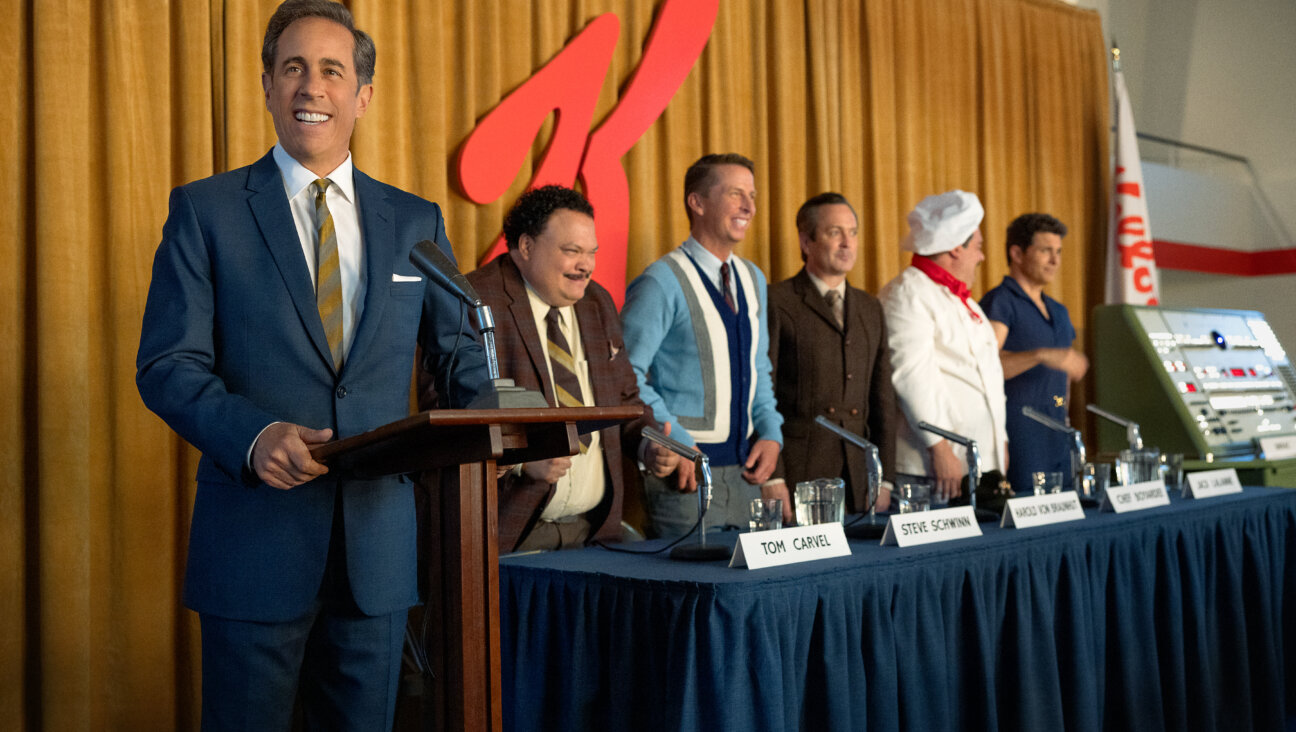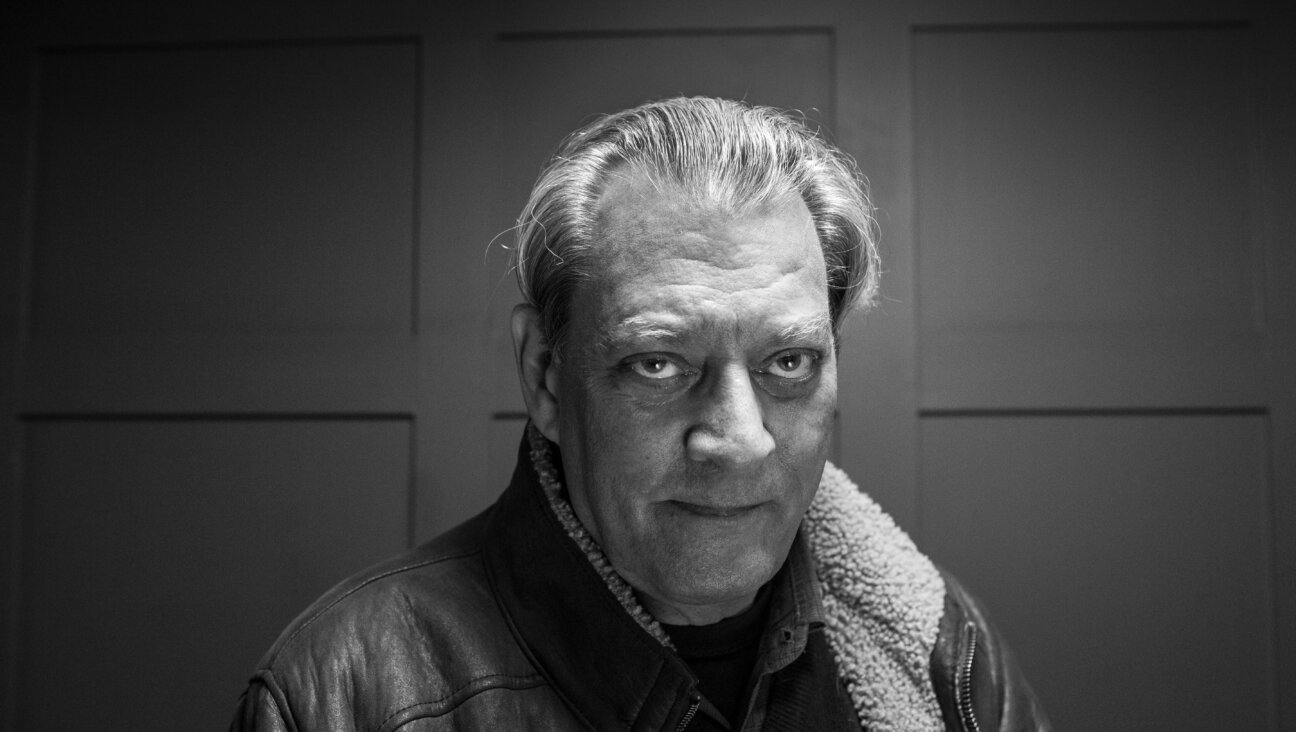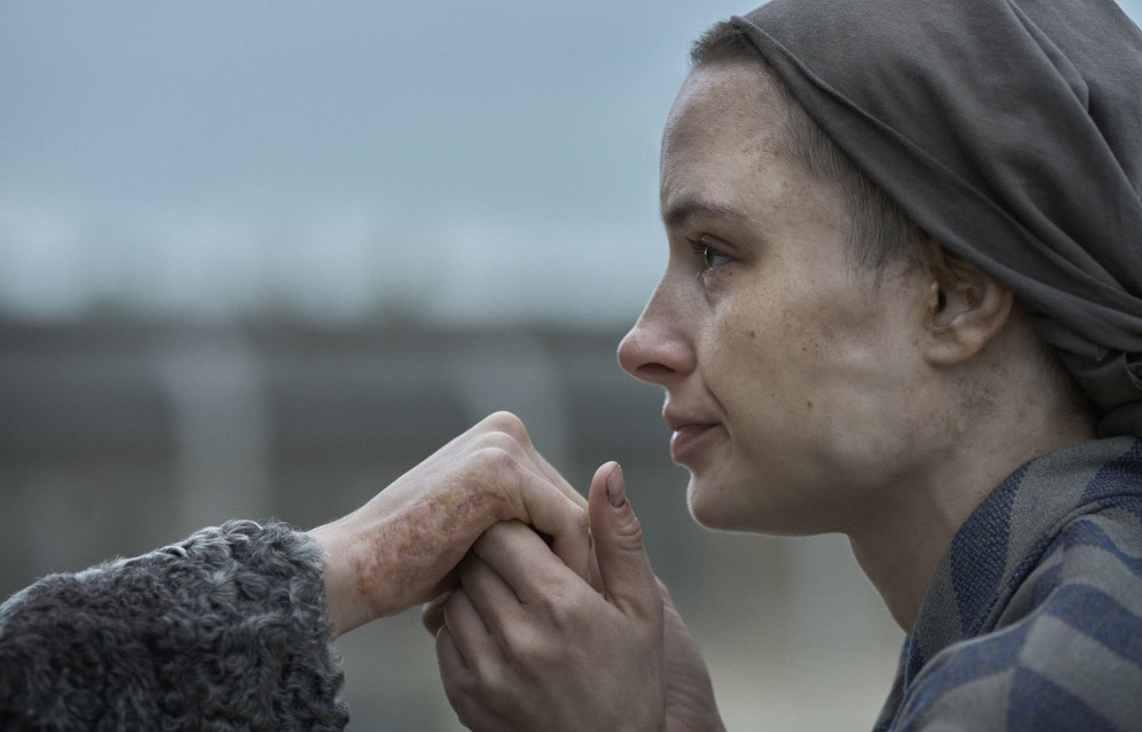The one thing critics, directors and film nerds get wrong about Stanley Kubrick

Stanley Kubrick Image by Getty Images
Stanley Kubrick: American Filmmaker
by David Mikics
Yale University Press, 248 pp, $26.00
When cinephiles compare Stanley Kubrick to God, they mean the fire-and-brimstone, all-knowing, all-powerful version. To me, he seems more like H.L Mencken’s God, a comedian performing for an audience too scared to laugh. Better yet, a drill sergeant performing insult comedy for marines too scared to do anything.
We don’t need an outright comedy like “Dr. Strangelove” to make the case for Kubrick the funnyman. We can even set aside half-comedies like “Lolita” and “A Clockwork Orange.” The ten remaining Kubrick features aren’t just funny, they’re an encyclopedia of black and blue, deadpan and slapstick, satire and farce. Above all, we find the comedy of polite, meaningless words. In “2001: A Space Odyssey,” seconds after we’ve witnessed the miracle of space travel, a flight attendant asks Dr. Floyd if he had a pleasant flight (“very nice, thanks,” he replies, the way you’d describe a night’s sleep or a cup of coffee).
“The Shining” begins with the general manager of the Overlook Hotel telling Jack Torrance about the ex-caretaker who murdered his whole family. Jack pauses, grins too widely, and says, “That’s not gonna happen with me.” Every other line of “Barry Lyndon” is like this — after shooting his rival, Barry asks, “Is he dead?” and gets an immortal response: “Quite dead.” Later, when Barry goes to buy some oil paintings, Kubrick can’t resist having him say, “I love the use of the color blue by the artist,” as if he were an eight-year-old trying to sound like a grownup.
For every dozen stumbling talkers in Kubrick’s films, there’s a silver tongue or two — R. Lee Ermey’s drill sergeant from “Full Metal Jacket” is probably the most famous example, but not the only. I’m partial to Mr. Milich, the unctuous, ursine shopkeeper from “Eyes Wide Shut.” In his first two minutes of screen time he convinces Bill Harford, played by Tom Cruise, to give him 200 bucks in exchange for a last-minute costume. A moment later, when he finds two men fooling around with his daughter in the back of his shop, he flies into a rage, locks them up, and carries on as if nothing happened. When the men bang on the door, he asks them to keep it down, every inch the mild, respectable businessman — “Gentlemen, please, can’t you see I’m with a customer?”
It’s hard to think of another filmmaker with such a lofty reputation and such a childish sense of humor. If this sounds like an odd thing to say about the director of “2001,” I refer you to the zero-gravity toilet featured in the film, which requires a full page of instructions to operate — i.e., eons and eons of evolution have produced creatures with super-complicated methods for disposing of their own waste. In “Room 237,” the 2012 documentary about “The Shining” and its many (stupid) fan theories, nobody mentions the scene with the bear fetish costume, possibly because the only fair response is a hearty chuckle — who would’ve guessed that the ghosts of the Overlook hotel just wanted to play dress up and lick each other’s privates? For much of the run time of “Eyes Wide Shut,” Kubrick — 70 years old, revered, but still a teenager at heart — seems to snigger at the fact that Tom Cruise is really, really short.
The 2010s were kind to “Eyes Wide Shut.” As someone who spent a lot of that decade in New York City rep cinemas, I can attest to the growing consensus that it’s Kubrick’s masterwork. Reading most of the admiring literature on the film, however, you’d think it was a solemn fable about love and death (which it may be, but it’s also a Manhattan sex romp about Tom Cruise trying and failing to cheat on Nicole Kidman). Even the best Eyes Wide Shut critics — for starters, Jonathan Rosenbaum, Greg Gerke, and Michael Koresky — fall into this trap. They mostly ignore the film’s tremors of madcap comedy, or its parade of Dickensian grotesques, or the wonderfully over-milked joke of Bill telling everyone he’s a doctor. They leave this stuff out, I think, because, when push comes to shove, they consider it incidental to the real meaning of the film, bits of dead air between broadcasts.
But it’s not. Ignore the comedy in Kubrick and you leave out an important part of his artistry, the one that holds the others steady. Without comedy, his films would be dry little puzzles, demanding and denying interpretation. This is the way some people like it — see any of the hundred half-witted “Clockwork Orange” exegeses available on YouTube. But Kubrick keeps offering us a way out of the maze. We may not be able to understand what he created; he may not, either. But we can still laugh — at his creations, at our own bafflement, and at the absurdity of it all. At the end of “Eyes Wide Shut,” Bill Harford reconciles with his wife Alice, but not because they finally understand each other. Instead, I think, Bill and Alice decide to stay together because they’ve learned to admit they don’t know everything. They’ve learned to laugh at each other, and themselves, and the world. All of which explains why the last word of “Eyes Wide Shut” is a dirty joke, delivered with a little smile: a one-word punchline as powerful as the final “yes” of “Ulysses.” I’d tell you what the word is, but don’t you already know?
If I had to pinpoint what’s missing from “Stanley Kubrick: American Filmmaker,” David Mikics’s concise new biography, I’d say humor. Not all humor, mind you — Mikics, a professor of English at the University of Houston, can be funny when he wants to be. But his Kubrick is a po-faced, sunken-eyed genius, and a bit of a bore — not exactly a man of marble, but not quite a man of flesh and blood, either. Recently, I came across the following anecdote. In order to shoot the “Dawn of Man” scenes from “2001,” Kubrick ordered MGM employees to raid the Namid Desert for kokerboom trees, no small crime in 1968. If caught, he told them, they were to blame Twentieth Century Fox. That’s Kubrick — impish, canny, bratty, earnest and deadpan at the same time. I defy you to find a story this good anywhere in Mikics’s book.
“I first saw ‘2001’ at about age twelve,” Mikics writes, “a few years after its premiere. From the beginning, the movie possessed me completely. I pored over Jerome Agel’s book ‘The Making of 2001,’ which was full of curiosities (the zero-gravity toilet instructions, HAL’s deathbed monologue printed in full).” Like Mikics, I saw ‘2001’ for the first time when I was twelve, on a smooth, black box that looked a lot like the one in the movie (except that the one in our living room was twenty inches tall instead of twenty feet). I, too, was the proud owner of a behind-the-scenes “2001” book, with glossy, atlas-sized pages and pictures annotated with monkish exactitude. I suspect a good chunk of contemporary SF filmmakers had similar experiences as kids. (Christopher Nolan has said so more than once, which explains why he’s spent the last twenty years trying and failing to make a “2001” of his own).
Such is the charm, and the temptation, of Kubrick’s work. His ingenuity is so great it threatens to overshadow the emotions that inspired it. The first time I saw “2001,” I was so amazed by the scene where Frank Poole jogs around Discovery One that I completely ignored the slow, melancholy Khachaturian music murmuring underneath. When I watch “2001” now, I can barely get through this scene without a lump in my throat. What does Mikics have to say about it? Merely that it’s a “design triumph … a white, gleaming world where style and function are mated.” Here, if I may be so bold, is the problem of Kubrick fandom in a nutshell. We’re so taken with the spaceship’s gleaming interior we forget its inhabitants are trapped in the middle of oblivion. We’re so absorbed in the ins and outs of the zero-gravity toilet we forget to laugh.
This is a shame, because most of the time Mikics writes about Kubrick with care and grace that few biographers can match. He’s especially good on the early Kubrick: the D+ average student who talked his way into a job at Look Magazine; the chess nerd who loved boxing and drumming; the scoundrel who married his high school sweetheart and then dumped her to chase after a ballerina. More than once I was reminded of Mikics’s previous subject, Saul Bellow — they have the same brash autodidacticism, the same machismo of the mind, even some of the same drinking buddies. “I spent an interesting three hours with Stanley Kubrick,” wrote Dwight Macdonald in 1959, “discussing Whitehead, Kafka, Potemkin, Zen Buddhism …” The first 50 pages of this book are full of sloshed New York intellectuals and artists; one of the more subtly mind-blowing points Mikics makes is that it used to be pretty easy to make friends with the likes of Diane Arbus and James Agee if you were a smart twenty-something (back when Manhattan had bars cheap enough to hang out in all day).
Mikics is good, too, at avoiding some of the stock phrases about Kubrick — that his films are “cold,” that he wasn’t interested in emotional interiority, and so on. “The deep-frozen impersonality that some claim to see in Kubrick,” he writes, “is really his rejection of Hollywood pathos: the hero who drinks because he can’t get over a dame, the brave heroine blinking back tears.” For good measure, he cites the film scholar Robert Kolker: “[Kubrick’s films] are in fact deeply moving, but the emotions need to be accessed through the intellect: by seeing more, understanding more.” This is a point well worth repeating. The figure of Kubrick the chilly anthropologist still dominates the conversation about his films, distracting us from Kubrick the father, Kubrick the lover, Kubrick the sensitive psychologist. But the ice seems to be melting — one sign is the rehabilitation of “Barry Lyndon” and “Eyes Wide Shut,” films which were ridiculed in their day but now seem surprisingly nourishing, to the point where most cinephiles I know prefer them to “2001,” “Dr. Strangelove” or “A Clockwork Orange.”
In dispensing with some of the obvious Kubrick clichés, however, Mikics leans more heavily on others. He’s too clever to accept that Kubrick was cold, but he overuses the already threadbare line that Kubrick was a ruthless, maniacal perfectionist. Page eight: “His perfectionism could be maddening.” Six pages later: “Kubrick’s patient, perfectionist artistry.” Eleven pages later: “Like Kubrick, she was a perfectionist.”
By “perfectionist,” Mikics seems to mean something like Kubrick’s attention to detail, the miles of film he shot, the dozens of takes he demanded, etc. The best rebuttal to this comes from Jonathan Rosenbaum: “Everyone seems to agree that such demands stemmed largely from Kubrick’s not knowing what he wanted except through negative indirection, but this is a far cry from what’s usually meant by perfectionism.” Kubrick could be controlling, to be sure, but his process was about uncertainty as much as mastery, closer to Freudian talk therapy than to a traditional rehearsal. To be a perfectionist means that you value perfection above all else, and Kubrick’s best films strike me as too daring to bother with being perfect. This is more than a quibble about nomenclature: by falling back on the P-word so often, Mikics celebrates that which is stately and solemn about Kubrick’s films but downplays what’s goofy and weird and self-deprecating. “Kubrick is always in earnest,” he insists.
Is this really true? It’s true, no doubt, that Kubrick’s camerawork isn’t showoff-y or self-advertising in the manner of, say, Orson Welles — watching a Kubrick film, you rarely get the feeling that your attention is being manipulated, that you’re looking at what the director wants you to look at (though, of course, you are). But being subdued isn’t the same as always being in earnest, just as being deadpan isn’t the same as being humorless.
Mikics gives the game away, I think, when he gets to “Barry Lyndon.” He writes about this film, one of Kubrick’s most delightfully surprising, as if he’s describing some middle-of-the-road Merchant-Ivory production. He says that the climactic duel scene — which I’ve seen projected in multiple theaters, to gales of giddy laughter — is “deadly serious,” and then skips over the funniest part, writing that Barry, “granted the first shot by the coin toss … refuses to fire at Bullingdon,” when any “Barry Lyndon” fan can tell you that Bullingdon, not Barry, is granted the first shot. Or consider the following passage, in which the clichés almost cancel each other out:
“The sheer slow poise of Barry Lyndon, the serene pacing of it, the perfection, never finicky, of each shot, marks it as the mighty opposite of seventies filmmaking, with its ragged, shoot-from-the-hip verve. It is an anti-Zeitgeist movie, harking back to the eighteenth century with its rage for order. Kubrick insists on careful battlefield design in a flat-out absurd yet historically real skirmish, with the British, including Barry, marching steadily to fife and drum toward a group of kneeling French soldiers, and getting just as steadily mowed down, since they cannot reload their muskets while marching.
“Slow” … “perfection” … “serene”—all the key Kubrick copy is here. A full decade of filmmaking is boiled down to a few words (was “Days of Heaven” a ragged film? “Chinatown?” “Star Wars?”) in order to stress the point that “Barry Lyndon” was an anti-Zeitgeist movie and a movie about a senseless, wasteful, technocratic war — because, yes, senseless wars have nothing at all to do with America in the 1970s.
The strangest scene in “Barry Lyndon” begins around the two-hour mark. Barry, rich and respectable for the first time in his life, has just learned that his young son Bryan has suffered a fatal riding accident. On his deathbed, Bryan asks his father if he’ll go to Heaven when he dies. “You’re not going to die,” Barry whimpers, his eyes saying the exact opposite.
“I have never been able to reconcile myself to [this scene],” Mikics writes: “Here Kubrick wholly surrenders to the Hollywood tearjerker mode that he scorned everywhere else in his work.” Fair enough: almost any way you look at it, this is a bad scene.
Why do I love it, then? The sight of Ryan O’Neal pretending to cry has never made me shed a single tear, but it’s haunting all the same. To go back to Kolker for a moment, I have to access the scene’s emotions through the intellect. I think about Barry fleeing his home, fighting in battle, double- and triple-crossing his masters, all to make a better life for himself and, in some sense, for his child. Then I think about how little this child — introduced less than 15 minutes before he shuffles off for good — means to me, and how much he means to Barry. As I do, I can’t help but realize how little I know about Barry, even after all this time watching him — I know where he’s been and what he’s done, but I know nothing at all about what it’s like to be Barry, what’s going on in his head from moment to moment. The gap between his misery and my lack is really the gap between his selfhood and mine. And Kubrick, for all his expertise, can’t bridge this gap any better than I can.
What really happens in this scene, I think, is that Kubrick lets the film get away from him, if only for a few seconds — it’s as if Barry’s grief is so powerful it throws the plot off its serene, poised path. There is a similar sort of lurch in each of Kubrick’s subsequent films: in “The Shining,” after Wendy locks Jack in the freezer, in “Full Metal Jacket,” after Private Pyle kills himself, in “Eyes Wide Shut,” after Bill shows up uninvited to an orgy. Order breaks down, to the point where plot itself follows. The control freak surrenders control, and it’s thrilling to behold.
Moments like these say a lot about Kubrick’s greatness as a director but very little about his impact on other directors. If Kubrick is still, more than two decades after his death, the most influential American filmmaker, it’s because he’s so often misread. All sorts of ambitious, visionary directors, from Denis Villeneuve to Christopher Nolan, from Shane Carruth to Alex Garland, seem to have watched Kubrick’s films and concluded that they should aspire to a cold “perfection,” tyrannize the tiniest details of their work, avoid pathos like the plague, and purge their art of the accidental and the uncanny. Taken together, their efforts play like a caricature of a Stanley Kubrick picture, with the set pieces drawn out of proportion and the odd little bits — the bear costumes and dying children and campy hotel clerks and Japanese tourists in glam wigs — scribbled over.
Armond White was probably right when he said that Kubrick has inspired more mediocre movies than any other great director. Somehow, a blatant Hitchcock rip-off like “Charade” is still pretty fun, but a blatant Kubrick rip-off like “Ex Machina” is a slog. A significant reason for this, I think, is that Kubrick casts a longer shadow than any single one of his films. The cult of Kubrick the tightly disciplined perfectionist is so alluring that it can be hard to see his films for the loose, baggy, monstrous marvels they are. Judging from this book, the cult is still going strong. A question, though, for Mikics, the wannabe Kubricks, and all the tweens watching “2001” for the first time: Is perfect the best art can be?

I hope you appreciated this article. Before you go, I’d like to ask you to please support the Forward’s award-winning, nonprofit journalism during this critical time.
Now more than ever, American Jews need independent news they can trust, with reporting driven by truth, not ideology. We serve you, not any ideological agenda.
At a time when other newsrooms are closing or cutting back, the Forward has removed its paywall and invested additional resources to report on the ground from Israel and around the U.S. on the impact of the war, rising antisemitism and the protests on college campuses.
Readers like you make it all possible. Support our work by becoming a Forward Member and connect with our journalism and your community.
Make a gift of any size and become a Forward member today. You’ll support our mission to tell the American Jewish story fully and fairly.
— Rachel Fishman Feddersen, Publisher and CEO
Join our mission to tell the Jewish story fully and fairly.























